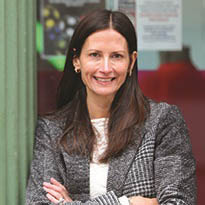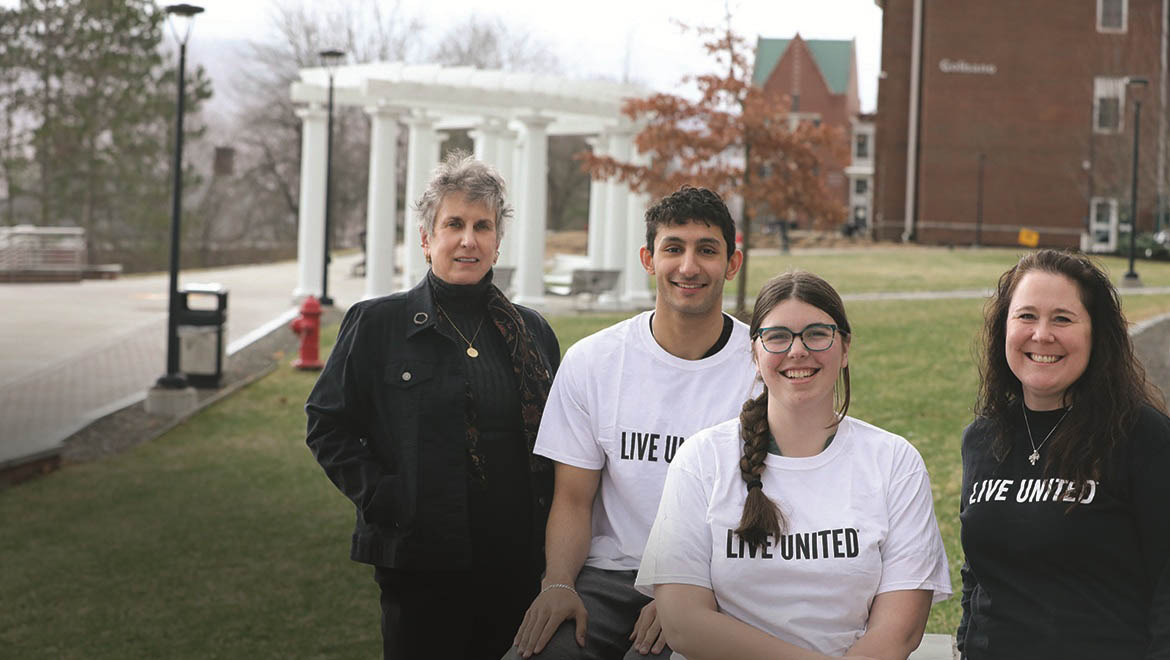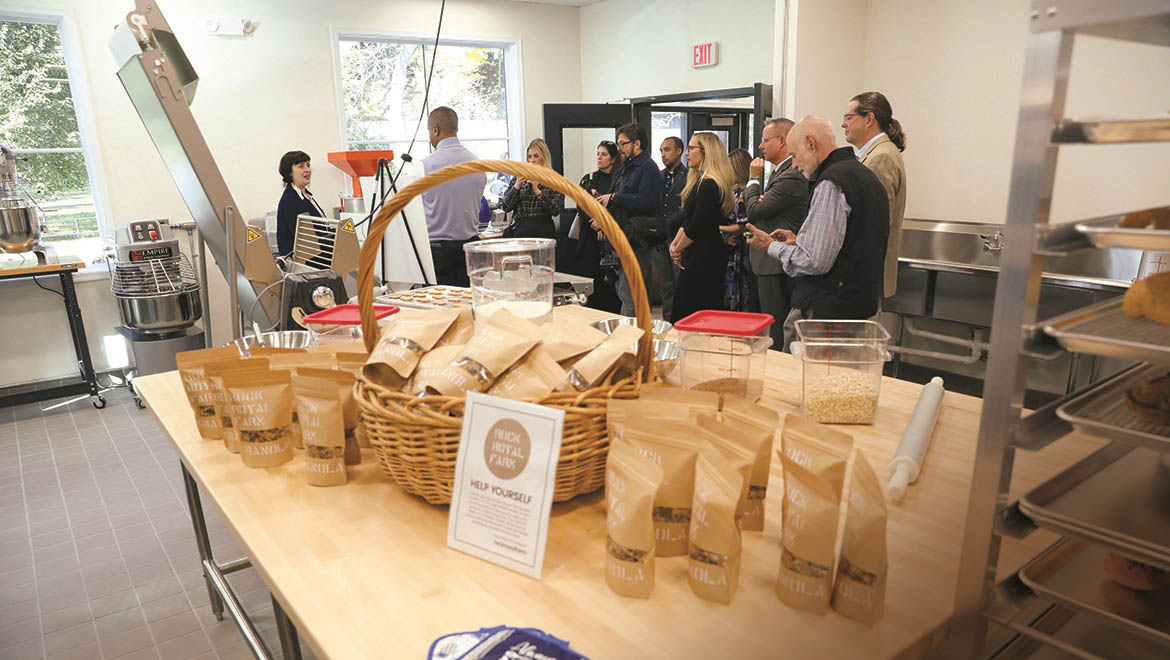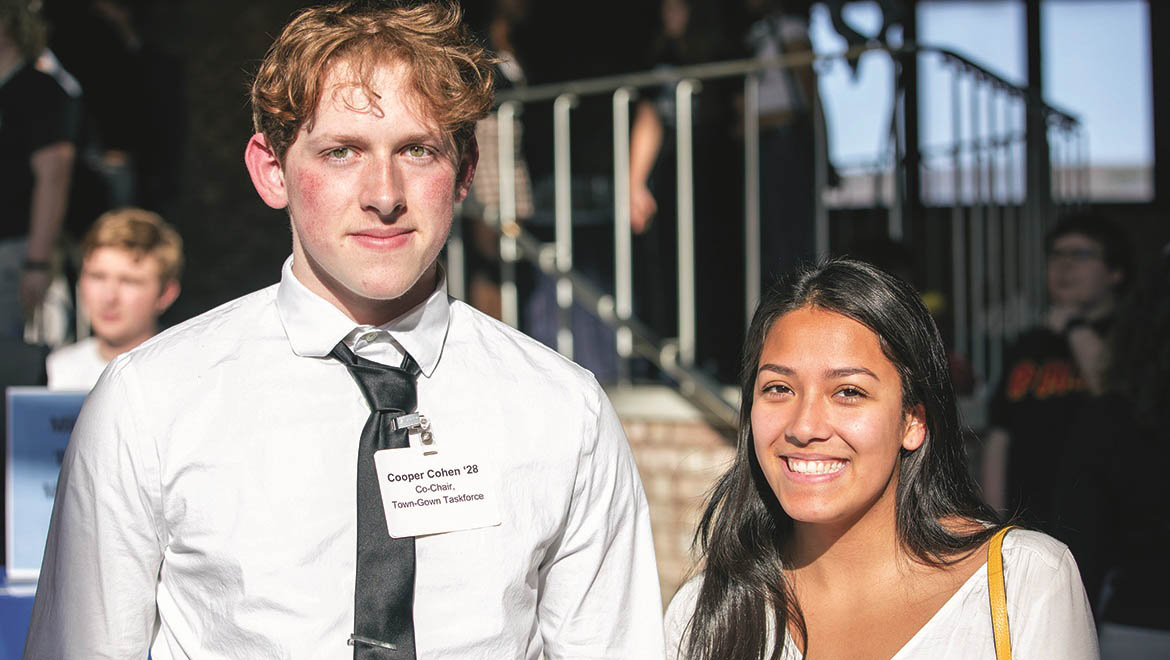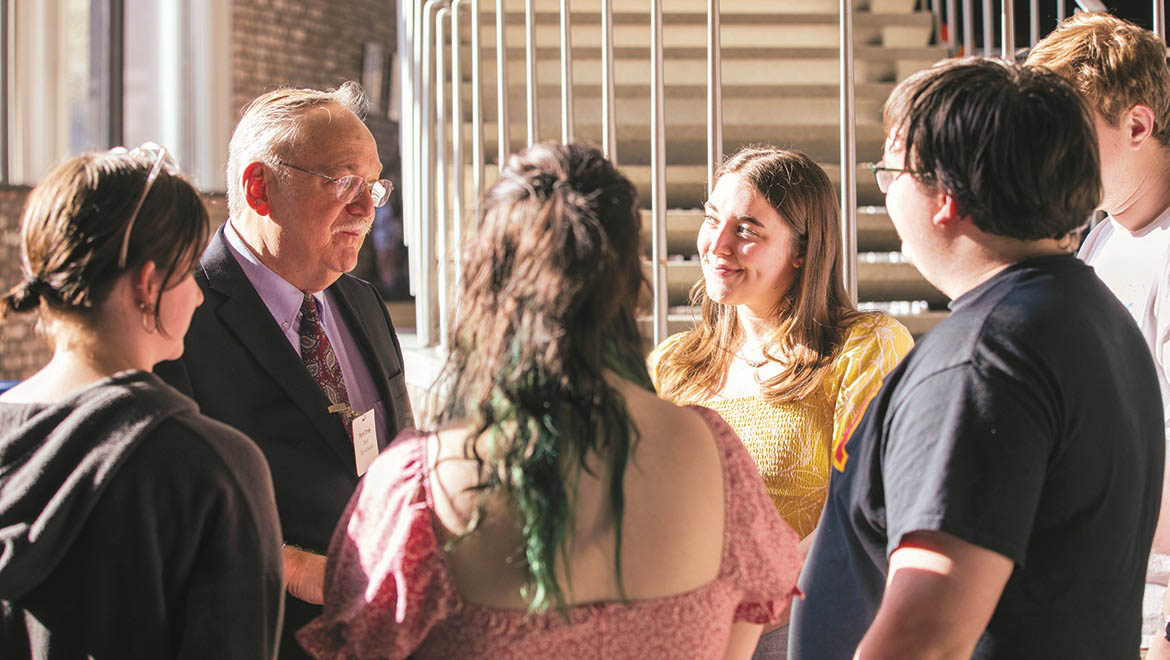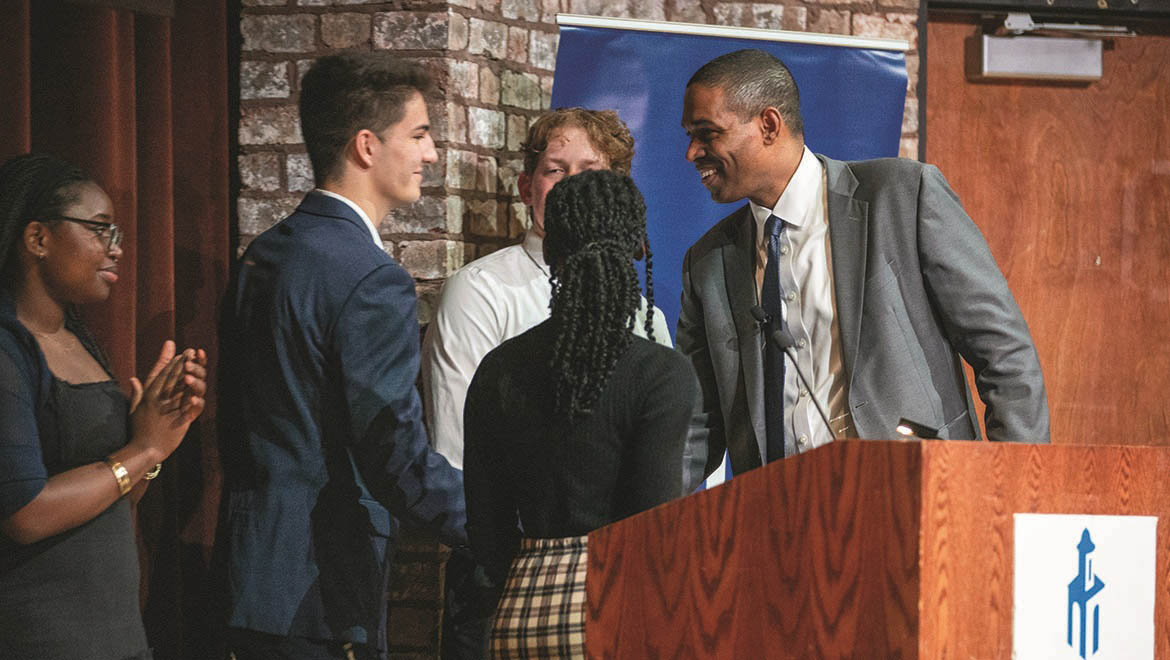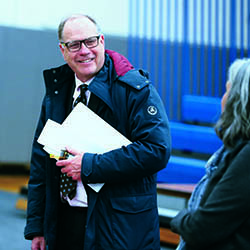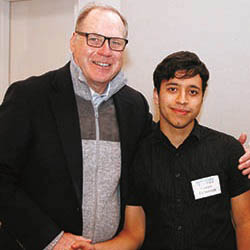“This region is rich in talent,” said Navarette, who has reimagined the one-semester course originated by former department colleague Carolyn Cooper in 2016. “When professionals tell their stories to students, recounting the impact made in the lives of those whom these organizations serve, the students are energized; catalyzed. Frankly, they begin to think of the good they could do ‘back home,’ in the communities in which they were raised.”
According to Navarette, the fall course is an intro to the nonprofit sector and how grant writing works within that space. The spring class — the Practicum — gives them the chance to put what they have learned to work through service learning.
Hartwick students have been placed in organizations such as the United Way of Mid-Rural New York, The Arc Otsego, and EDD Adaptive Sports. Over the past three years, they have generated significant funding for all three enterprises.
“All told, our students have collectively brought in nearly $33,000 to our partners,” Navarette attested. “Recently, at a student’s urging, one of our partners increased the amount it was requesting, from $2,000 to $5,000 — and the ‘ask’ was funded, thanks to that student’s initiative and writing.”
The courses have gained popularity coming out of the pandemic, added Navarette, who sees them as part of what makes Hartwick stand out within the landscape of liberal arts colleges. Part of their distinction is Navarette’s selectivity, along with her insistence that students prove themselves ready to represent the College in the community.
“Not every student is placed in an internship,” Navarette shared. “The students in the intro course know that advancement (i.e., placement with a community partner) depends not only on the quality of their work and engagement but also on their professionalism, accountability and other soft skills. They must show that they’re ready to assume responsibility and to represent the College credibly. We deliver — and our work has quietly redounded to Hartwick’s credit.”
That’s something Elizabeth Monaco has seen up close. As executive director of the United Way of Mid-Rural New York, she’s had the pleasure of working alongside Hartwick interns for three years.
“They’ve helped us secure over $15,000 in funding for the Dolly Parton Imagination Library Program and our regional dental task force, projects that work closely with young children in our communities,” she said.
This semester, two students are experiencing life inside one of the region’s broadest and most impactful human services agencies: Victoria Nash ’25 from Centerburg, Ohio, and Mahdi Behniaye ’26 from Hannibal, Mo.
For Nash, working on a grant to continue the library’s role in the region has been especially rewarding — because the not-for-profit had a profound impact on her as a child-recipient of its books.
“I’m an English major with a deep love of reading and libraries; I also have dyslexia,” said the Faculty Scholar and Honors Program member who is also majoring in music. “I still hold the memories of my family and those books closely, as it helped instill my love of reading, despite my challenges.”
Nash is grateful to be learning from Monaco and supporting child reading initiatives across the counties of Chenango, Delaware and Otsego.
“To have benefitted from the Dolly Parton program and to now be able to help it serve children in Hartwick’s region, no matter their social class or background, is very important to me,” she added. “I am beyond thankful to help in this area and learn about the not-for-profit sector. I hope to bring what I have learned back to my community.”
The experience has exceeded Behniaye’s expectations as well.
“I originally began taking this course just for some diversity in my schedule and to try something new,” said the biochemistry/pre-med major and swim team member. “But I am extremely happy that I did, not only because of how much I’ve learned in the nonprofit field, but also for how fulfilling the work I am doing can be.”
Monaco has truly embraced the experience. She is grateful not only for her interns’ efforts, but also for her opportunity to contribute to their education.
“It has been a joy for me to work with these students as a mentor and guide,” she said. “I’ve exposed them to the world of nonprofit grant writing and the challenges and obstacles of running a human services organization in a small, rural community. I hope we’ve inspired them to continue making a difference.”
Faith Tiemann ’05 is also a fan. As chief marketing officer with The Arc Otsego, which serves individuals with intellectual and other developmental disabilities, she hosted Chaw Akari San ’24, who had a strong impact on her team in the spring of 2024.
“We designated a data analysis project to her, helping us sort through data on grants submitted and received by Arc chapters throughout The Arc New York’s chapter reach,” said Tiemann. “Chaw worked diligently to compile the data and presented it to our workgroup in a way that was easy to digest and succinct. We had a great experience!”
